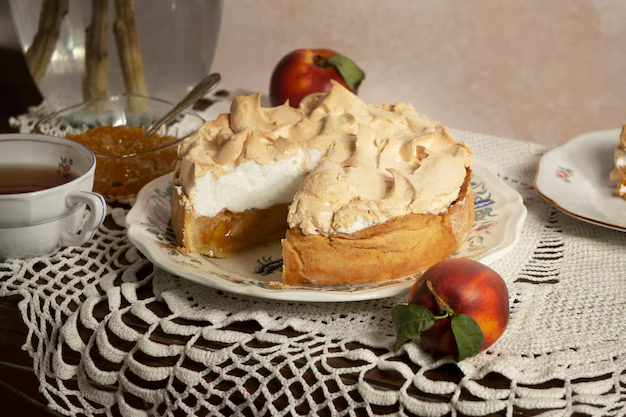Is Your Banana Pudding Still Good? How to Tell How Long It Lasts in the Refrigerator
Banana pudding, with its creamy texture and sweet flavors, is a comforting dessert beloved by many. Whether homemade or store-bought, this delightful treat rarely stays untouched in the fridge for long. But how long should you really keep it before it's time to let go? Understanding the shelf life of banana pudding can help you enjoy this dessert without any worries. Dive in as we explore how long banana pudding lasts in the refrigerator and share useful insights on storage tips, signs of spoilage, and more.
🕵️♀️ Understanding Banana Pudding Ingredients
A Brief Breakdown
Banana pudding is typically made of several layers: a creamy pudding base, banana slices, and vanilla wafers. Each component has its individual shelf life and contributes to the overall longevity of the dessert. Here's what goes into the mix:
- Creamy base: Usually made with milk or cream, sometimes with eggs.
- Banana slices: Fresh fruit, which can ripen or spoil quickly.
- Vanilla wafers: Offer texture, but can become soggy over time.
- Whipped cream or meringue topping: Adds richness and flavor.
Each of these elements affects how long banana pudding stays fresh, especially when it’s stored in the refrigerator.
🗓️ Banana Pudding Shelf Life: What to Expect
How Long Can It Last?
Generally, homemade banana pudding can last about 3 to 4 days in the refrigerator. However, its freshness and appeal can diminish even before that, depending on how it's stored and the specific ingredients used. Store-bought versions may contain preservatives, potentially extending their shelf life slightly longer, perhaps up to 5 days.
Factors Affecting Longevity
- Storage Conditions: Proper refrigeration is essential. Ensure your fridge stays at a consistent temperature, ideally below 40°F (4°C).
- Freshness of Ingredients: The riper the bananas, the quicker they may spoil. Using fresh or slightly underripe bananas can help prolong shelf life.
- Covering: Airtight containers help prevent the dessert from absorbing flavors and odors from other foods in the refrigerator.
Pro Tip: For best results, consider making fresh servings that can be consumed within a day or two. This ensures you enjoy the pudding at its peak freshness.
🛑 Recognizing Spoilage: Is It Still Safe to Eat?
Key Signs Your Banana Pudding Has Gone Bad
It's crucial to recognize when banana pudding is no longer safe to consume. Common signs of spoilage include:
- Discoloration: Bananas may turn brown, or the pudding layers might show signs of grey or green hues.
- Texture: Separation of layers or an excessively soggy consistency.
- Smell: Off-putting or sour odor is a definite red flag.
- Taste: When in doubt, a small taste test can confirm spoilage, but use caution and rely on other signs first.
Trust Your Senses
When it comes to food safety, trusting your senses is vital. If something doesn’t look, smell, or feel right, it’s best to err on the side of caution and discard the pudding.
🧊 Smart Storage Tips for Maximum Freshness
Best Practices for Storing Banana Pudding
To extend the shelf life of your banana pudding, consider the following storage tips:
- Use Airtight Containers: Seal in freshness by storing the pudding in containers that prevent air from entering.
- Layering Strategy: Place a layer of plastic wrap directly on top of the pudding before sealing to help minimize oxidation, especially for the banana slices.
- Cool Down First: Allow freshly made pudding to cool down to room temperature before refrigerating, to prevent condensation.
- Serve in Small Portions: Only take out what you plan to eat to avoid repeated temperature changes that can speed up spoilage.
Prep and Serve Wisely
Avoid leaving banana pudding at room temperature for prolonged periods, especially on hot days. When serving, return leftovers to the fridge promptly.
🏡 Homemade vs. Store-Bought: Does It Make a Difference?
Comparing Shelf Lives
Homemade banana pudding offers control over ingredients and freshness, but lacks preservatives, often leading to a shorter shelf life. Conversely, pre-packaged versions may last a bit longer due to additional ingredients designed to extend freshness. However, they may sacrifice flavor and texture compared to their homemade counterparts.
Choose What Suits You
If longevity is a priority, store-bought may be the way to go. But for the ultimate taste and texture, freshly made at home is often preferred.
🍽️ Enjoying Banana Pudding: Consumption Tips
Making the Most of Your Dessert
To get the best enjoyment from your banana pudding:
- Pair with Coffee or Tea: The creamy sweetness complements hot beverages exceptionally well.
- Creative Presentations: Serve in individual cups to avoid repeated exposure to the entire portion, preserving freshness for the next serving.
- Top it Off: Add fresh banana slices or a new layer of whipped cream just before serving to enhance appearance and taste.
🛠️ Visual Summary: Quick Tips for Banana Pudding Storage
Here's a handy visual guide to ensure you remember key storage tips and spoilage signs:
🔍 Quick Summary: Banana Pudding Care
- 📅 Shelf Life: 3-4 days (homemade), up to 5 days (store-bought)
- ❄️ Storage Tip: Use airtight containers, peel freshness, avoid temperature changes
- ⚠️ Spoilage Signs: Discoloration, weird smell, off texture
- 🍽️ Consumption: Serve in small portions, keep fresh ingredients handy
Final Thoughts: Savor Your Banana Pudding with Confidence
Banana pudding is truly a treat that offers warmth and joy in every bite. By understanding how to store it properly and recognizing when it's time to let go, you can enjoy this delightful dessert at its best. Whether you're making it from scratch or enjoying a store-bought version, these tips will help keep your banana pudding fresh, safe, and delicious every time.
